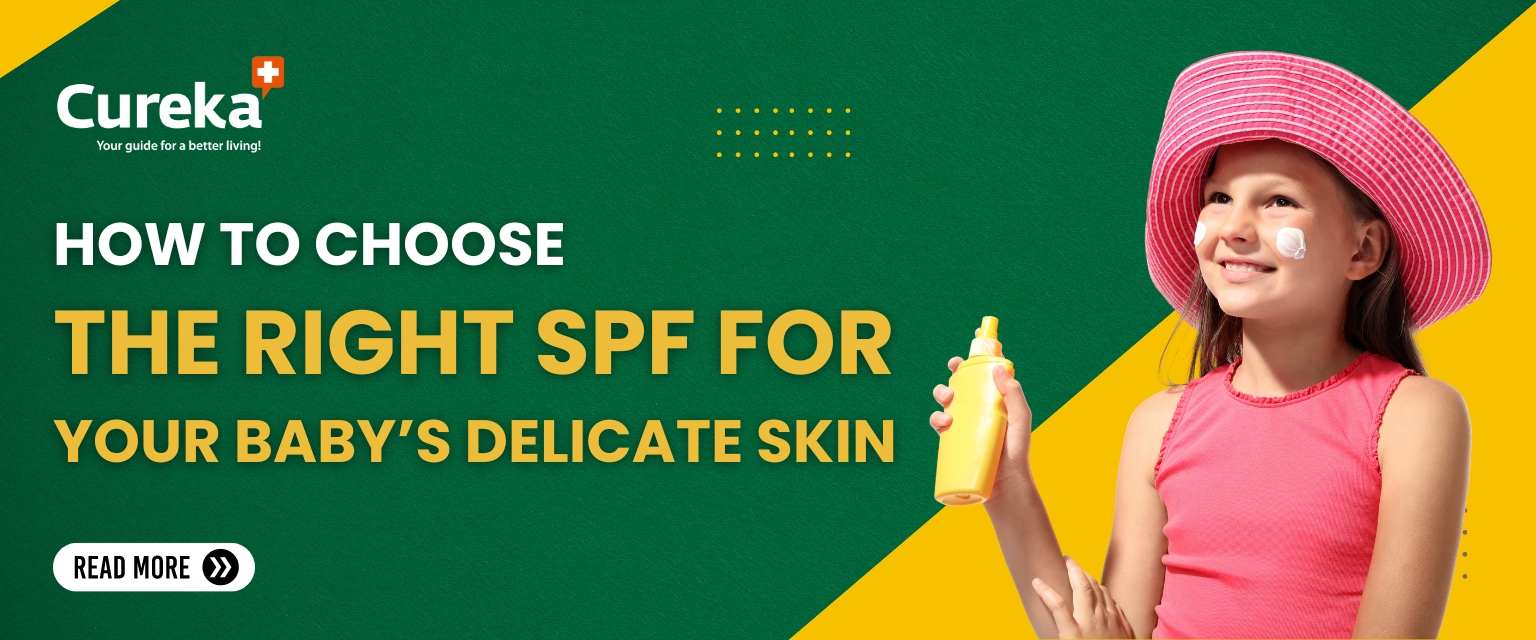How to Choose the Right SPF for Your Baby’s Delicate Skin
When the sun is shining, and outdoor adventures call, protecting your baby’s delicate skin from harmful UV rays is a top priority. But with so many sunscreen options on the market, how do you choose the right one for your little one? Is higher SPF always better, or could certain ingredients be doing more harm than good? And are there natural or plant-based sunscreens that offer the same level of protection as their mineral and chemical counterparts? Let’s explore what you may not already know about keeping your baby safe from the sun’s rays.
Why SPF Matters for Babies:
Sun Protection Factor (SPF) measures how effectively a sunscreen blocks UVB rays, the type of rays responsible for sunburn and an increased risk of skin cancer. For babies, it’s recommended to use sunscreen with at least SPF 30 to provide enough protection while minimizing exposure to harsh chemicals.
SPF 30 blocks approximately 97% of UVB rays, helping to preserve essential skin proteins such as keratin and collagen that are vital for maintaining skin smoothness and elasticity.
Mineral-Based Sunscreens:
When it comes to choosing a sunscreen for babies, mineral-based sunscreens stand out for their gentle yet effective protection. Unlike chemical sunscreens, which absorb into the skin, mineral sunscreens create a physical barrier that reflects UV rays off the skin’s surface.
Here are a few reasons why mineral sunscreens are often preferred for children:
Gentle on Sensitive Skin: Babies have delicate skin that’s more prone to irritation, and mineral sunscreens—often made with zinc oxide or titanium dioxide—are formulated to be less likely to cause allergic reactions.
Immediate Protection: These sunscreens offer instant UV protection from the moment they’re applied, unlike chemical versions that require time to become effective.
Less Chemical Absorption: Mineral sunscreens are less likely to be absorbed into the skin, reducing the risk of internal exposure to potentially harmful chemicals.
The Rise of Plant-Based and Natural Sunscreens:
While mineral sunscreens are known for their safety, there’s another category making waves in the sun protection world: plant-based and natural sunscreens. These products often combine mineral UV blockers with botanical ingredients that soothe and nourish the skin without the use of synthetic chemicals.
Natural sunscreens avoid harsh preservatives and fragrances and often feature ingredients like aloe vera, green tea extract, and sunflower oil, which provide antioxidant protection while also being kind to your baby’s skin. Some even include raspberry seed oil, known for its natural SPF properties, and coconut oil, which moisturizes while providing a mild level of UV protection.
While plant-based options may not always have the same broad-spectrum UV blocking power as their mineral or chemical counterparts, they are ideal for parents looking to limit the number of synthetic ingredients they apply to their baby’s skin. However, always check that plant-based sunscreens still offer adequate SPF and broad-spectrum protection.
Sun protection for infants:
It’s common practice to expose infants to morning sunlight for vitamin D synthesis, which is crucial for their bone health and immune development. Morning sunlight, particularly before 10 a.m., provides the necessary UVB rays for vitamin D production while minimizing the risk of sunburn. However, even in the gentle morning sun, infants’ skin is highly sensitive and prone to damage.
For infants under 6 months, research suggests that brief exposure to morning sunlight—about 10 to 15 minutes—is sufficient to help with vitamin D synthesis, and it’s best to do this without sunscreen. After this brief exposure, it’s advisable to move the baby into the shade or cover their skin with lightweight, breathable clothing. If more extended time in the sun is unavoidable, the safest approach is to use mineral-based sunscreens on limited areas such as the face or hands, ensuring that the delicate skin remains protected from harmful UV rays. This balance allows parents to safely promote vitamin D production while preventing potential sun damage.
Baby Sunscreen vs. Adult Sunscreen: What’s the Difference?
Have you ever wondered whether there’s any real difference between sunscreen made for babies and the one you use yourself? The answer lies in the formulation. While adult sunscreens may contain stronger scents or chemicals that could irritate a baby’s sensitive skin, baby sunscreens are crafted with gentler ingredients. Avoiding harsh chemicals and fragrances, they’re designed to minimize the risk of irritation and allergic reactions. Interestingly, adults with sensitive skin can use baby sunscreen.
Understanding Your Baby’s Skin:
Not all baby skin is the same. Some infants have more sensitive skin, while others may be prone to certain irritations. This is why understanding your baby’s skin type is crucial when selecting sunscreen. Hypoallergenic and dermatologist-tested options are often the best choices, particularly for babies with extra-sensitive skin.
Did you know about the harmful sunscreen ingredients to avoid?
While it’s important to know what ingredients are beneficial, it’s equally vital to be aware of what to avoid. Oxybenzone, a common chemical in many sunscreens, has been linked to allergic reactions, particularly in children. The same can be said for octinoxate, another chemical that is increasingly being scrutinized for its potential to cause skin allergies and skin barrier function.
For this reason, many parents are turning to sunscreens labeled reef-safe. These sunscreens avoid chemicals like oxybenzone and octinoxate, which are harmful not only to humans but also to coral reefs and marine life.
Applying Sunscreen Correctly: Dos and Don’ts
Even the best sunscreen won’t offer proper protection if it isn’t applied correctly. Reapply sunscreen generously every hour, especially after your baby has been in water or sweated. Don’t forget often-missed spots like the ears, back of the neck, and the tops of the feet.
Protecting What’s Most Precious:
Finding the right sunscreen for your baby is about more than just choosing a high SPF number. It’s about understanding how different ingredients affect sensitive skin, making sure you’re using the right formulation, and applying it effectively to ensure your baby stays safe under the sun. With the right sunscreen, whether it’s mineral-based or plant-based, you can enjoy peace of mind knowing that you’re providing the best possible care for your little one’s delicate skin.











